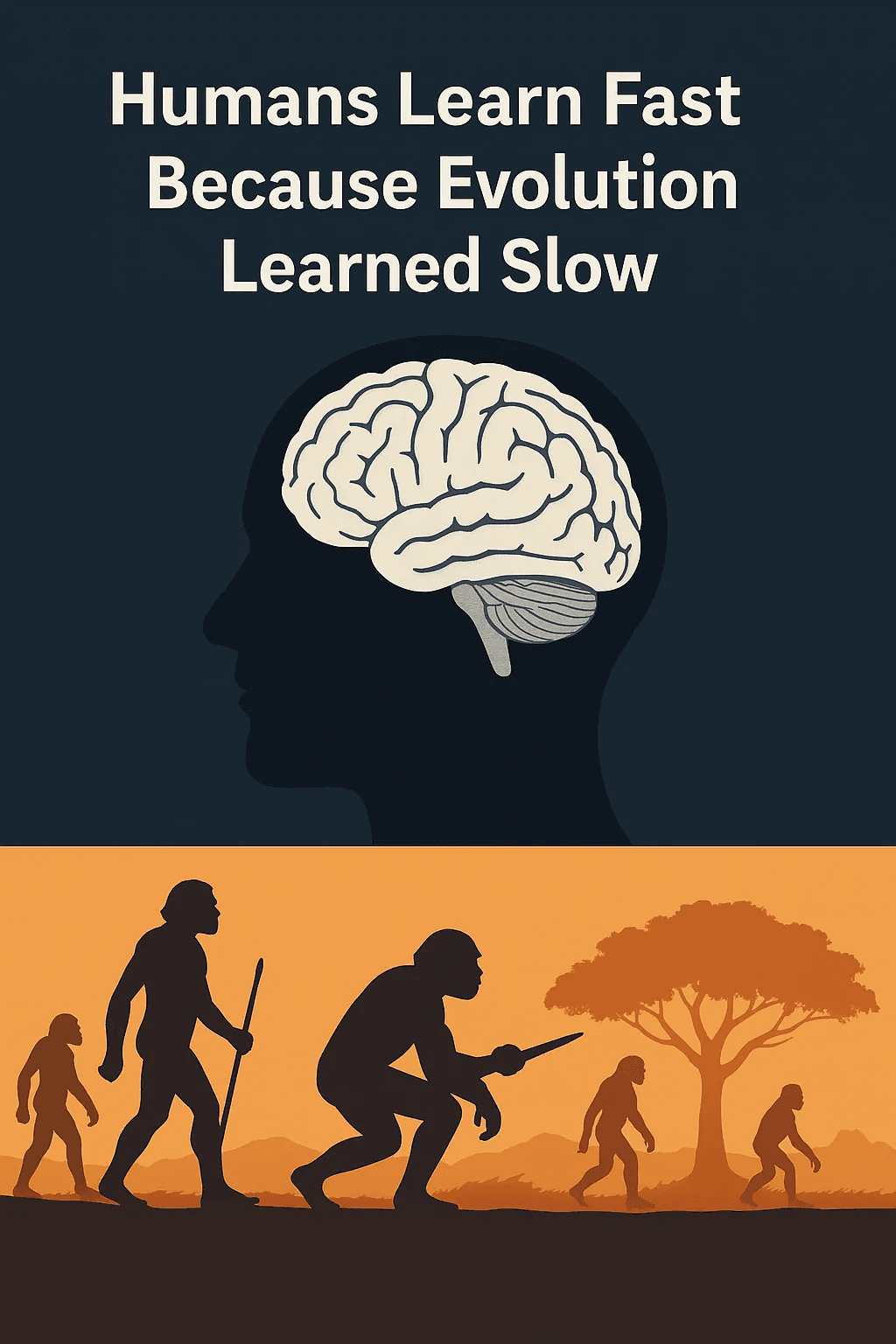Rethinking the “Humans vs AI Data Efficiency” Argument
One of the common claims you’ll hear in the AI research community — and often echoed in public discussions — is something like this:
“AI models need massive amounts of data to learn, but humans can learn from just a few examples.”
On the surface, this sounds compelling. After all, a child can often learn a new word after hearing it just once. A human can recognize a new object from a single glance. Meanwhile, today’s large language models or computer vision systems often require terabytes of training data just to function at a reasonable level.
But this comparison misses a crucial point about how humans — and really, all biological intelligence — actually works.
Humans Are Not Learning From Scratch
Human babies might look helpless, but their brains are anything but blank slates. In fact, when a human baby is born, its brain already contains an extraordinary amount of prior structure — structures that have been optimized, shaped, and encoded over millions of years of evolution.
This is fundamentally different from the typical way many machine learning systems start training: from random weights and no innate structure.
Consider animals like deer or antelope. Within minutes of birth, a newborn can stand up, walk, and even run from predators. This ability wasn’t learned in those few minutes. It was encoded genetically, through neural wiring patterns shaped by natural selection. The babies that couldn’t walk quickly were more likely to be eaten — and their genes disappeared from the population. Over many generations, what remained were genes that wired the brain for walking right from birth.
Humans are no different — just adapted for different survival strategies.
The Evolutionary Pretraining of the Human Brain
Human intelligence didn’t emerge overnight. It’s the result of countless survival challenges faced by our ancestors. Natural selection doesn’t just operate on bodies — it operates on brains.
Babies are born with built-in capacities for:
- Language learning
- Social recognition
- Pattern detection
- Intuitive physics
- Even rudimentary mathematical abilities
These aren’t learned in the first few moments of life. They are prepared by evolution — by the “massive dataset” of real-world survival over millions of years.
In modern AI terms, humans come into the world already pretrained — with powerful, structured priors built into their neural architecture. What looks like “few-shot learning” is really the result of this deeply structured foundation. Humans today can learn new things from very little data because we’re standing on top of a massive mountain of evolutionary, cultural, and social pre-training.
In a way:
- Evolution = multi-million-year pretraining
- Culture & language = thousands of years of fine-tuning
- Childhood = years of supervised + reinforced learning
- Daily life = continual online learning
So when a human sees one example of a new concept — say, a weird new animal or a new word — they’re not learning from scratch. They’re leveraging priors built over millions of years + a huge internal model of how the world works.
AI Is Now Following a Similar Path
Interestingly, the trajectory of modern AI is beginning to mirror this evolutionary process.
Where early machine learning focused on training narrow models from scratch, today’s foundation models like GPT, Gemini are first pretrained on vast, diverse data (the rough equivalent of evolutionary experience). After pretraining, they can rapidly adapt to new tasks with minimal examples — just like humans.
We are building AI systems that learn efficiently — but only after they’ve been trained massively.
Modern AI is actually starting to follow a similar path:
- Pretrain on massive diverse data (like evolution & culture)
- Fine-tune on task-specific data (like school & experiences)
- Use small-shot or zero-shot learning (like humans do)
In that sense, the gap is narrowing.
The Real Comparison: Learning On Top of Pretraining
So the real difference between humans and today’s AI isn’t that humans learn from less data. It’s that humans start learning in life already equipped with the product of millions of years of “evolutionary pretraining” — a process that used a dataset far larger, and far richer, than any text corpus or image database.
When a baby learns a new word from a parent, that’s not “one-shot learning from scratch.” It’s one-shot learning on top of an incredibly structured, optimized, and specialized biological model — the human brain.
AI is just starting to catch up to that idea.
Final Thoughts
The next time you hear someone say “humans learn from less data than AI,” remember this:
Humans are built from data.
Millions of years of it.
Encoded through evolution.
Shaped by survival.
Refined by culture.
We don’t learn quickly despite having little data.
We learn quickly because we are the product of massive data.
AI is not broken because it needs lots of data.
It’s simply walking a path evolution figured out a long time ago.
